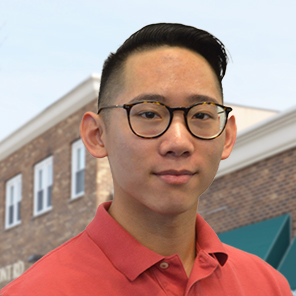The USA may be out of the FIFA World Cup, but there is still a TON of awesome soccer to watch. The tournament has seen athletes exhibit the highest level of skill and competition. But with such aggressive battles, many teams have also seen their fair share of injuries.
Some injuries have been to high profile athletes, such as Brazilian superstar, Neymar, or England captain, Harry Kane. But the stories of Neymar and Kane have ended with both returning to the tournament and even scoring goals in their comeback games.
Less lucky are athletes sustaining knee cruciate ligament injuries, including Brazil’s Alex Telles (PCL, LCL) and French defender, Lucas Hernandez (ACL rupture). Injuries to the cruciate ligaments, especially the anterior cruciate ligament (ACL) are extremely common in the sport of soccer. In this blog, Livingston physical therapist, Andrew Foo, PT, DPT, details his experience with an ACL injury from soccer and his return to play.
My injury occurred while I was playing in an intramural soccer league while in physical therapy school. I was receiving a pass from a teammate when I was jostled from behind. I twisted over my planted leg, causing my knee to collapse inward.
The type of injury I sustained was an ACL rupture, an MCL sprain, and meniscus tear. The ACL (anterior cruciate ligament) and MCL (medial collateral ligament) are two of the four key ligaments that assist in stabilizing the knee. The ACL connects the front of the tibia, otherwise known as the shinbone, to the backside of the femur, or thighbone, and helps prevent the tibia from shifting forward relative to the femur. It also provides rotational stability to the knee. The MCL has attachment points to the tibia and femur as well. It runs along the medial, or inner side, of the knee and assists in controlling side to side movements.
Due to the demands on the sport and the nature of the game, ACL injuries are one of the most common amongst soccer players. Most ACL injuries that occur are categorized as non-contact injuries which occur when an individual suddenly stops of pivots to change directly. The abrupt deceleration causes a shearing or twisting force on the ligament causing it to tear. Contact related injuries are less common and occur when there is a direct blow to the knee.
Following my injury, I managed my injury conservatively with strength and conditioning exercises while completing my PT studies. The recovery following surgery would have interfered with my clinical internships. However, given my age and active lifestyle, I was considered a candidate for ACL reconstruction and eventually underwent surgery.
For ACL surgery, grafts can be harvested from either the patient’s tissue (autograft) or from foreign cadaver tissue (allograft), and can be taken from a number of different sites in the body (hamstring, achilles, quadriceps). For my surgery, the type of tendon graft used was an autograft patellar tendon. Due to the integrity of my meniscus, the surgeon believed that it was not repairable and opted for a debridement, where the damaged tissue is removed smoothed, instead.
The early phase of my physical therapy focused on low intensity hip and knee strengthening with an emphasis on the quadriceps and restoring full knee mobility. Rehab felt repetitive during this phase, but it was necessary in order to maximally protect the integrity of the newly reconstructed ligament. This protective phase lasted about 6 weeks. The latter portion of my PT continued to reinforce improving muscle strength and endurance, as well as challenging my stability and coordinating at higher intensities. Eventually I was cleared to begin jogging and gradually progressed towards running and performing agility drills. These drills focused on changing directions and speed. After 5 months of formal physical therapy, I was discharged but continued to perform strength and conditioning exercises until I could return to playing.
Like many athletes, as well as individuals who just play casually but want to continue to play, one of my biggest struggles when returning to soccer was overcoming the psychological hurdle of the potential to reinjure my ACL. I can wholeheartedly say that the first time I stepped back on the field, I was not mentally prepared to play as aggressively as I previously had. However, I found that playing more consistently and practicing drills, as well continuing with a focused exercise program, helped in making movements feel less foreign and in building up my confidence.
An on-going exercise program is imperative in returning to play following ACL injury. Learn more about how EXCEL’s Return to Sport program can help you get back to your former competitive self.
Andrew holds a B.S. in Biology from Seton Hall University, where he went on to earn his Doctorate of Physical Therapy as a part of their accelerated dual-degree program. He is no stranger to being a patient, having gone through ACL reconstructive surgery following a soccer knee injury. Through his personal rehabilitation experience, Andrew recognizes an injury’s recovery process can be complex, extending beyond physical barriers and including emotional and psychological barriers as well. Learn more about Andrew.

